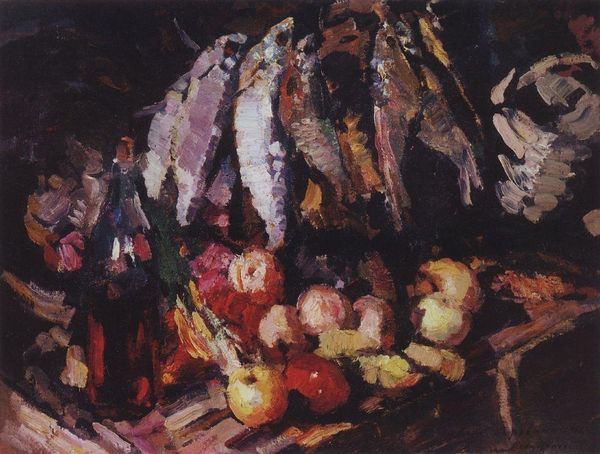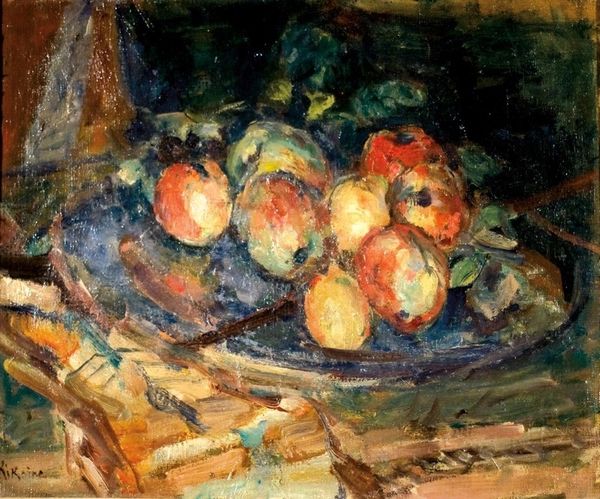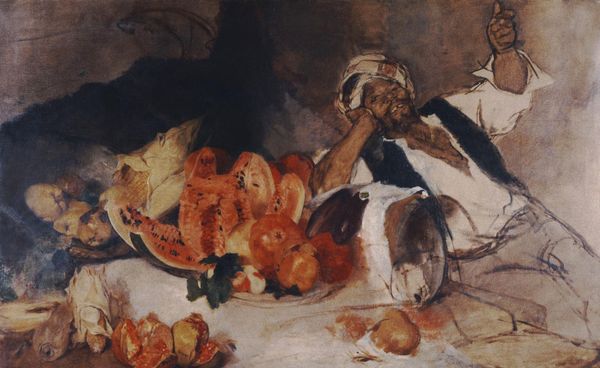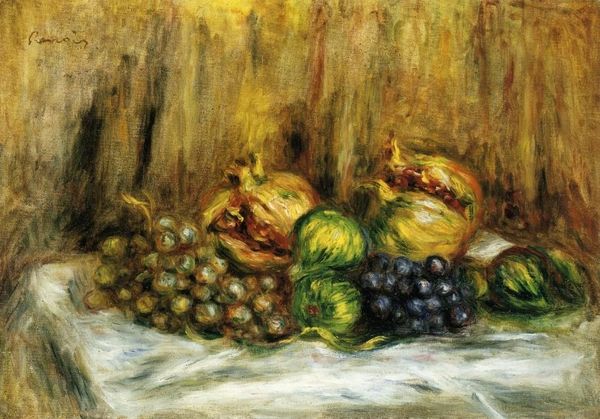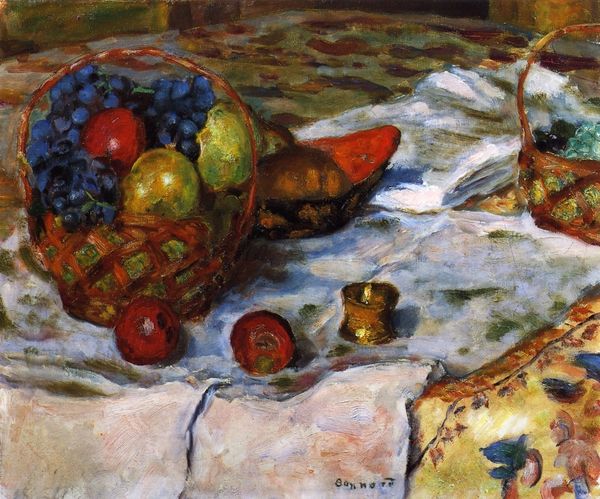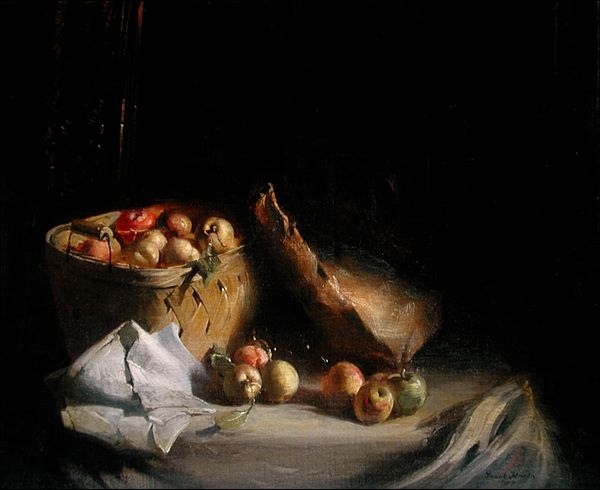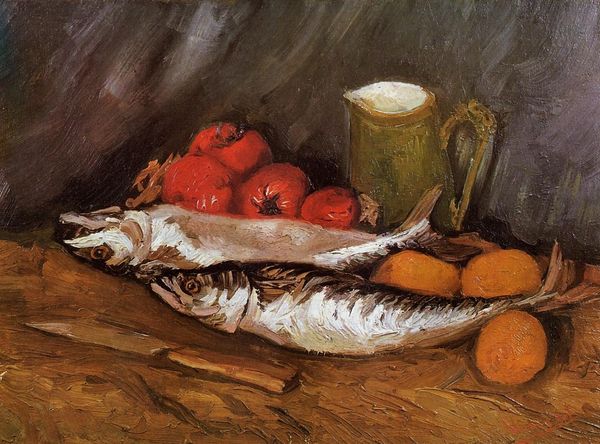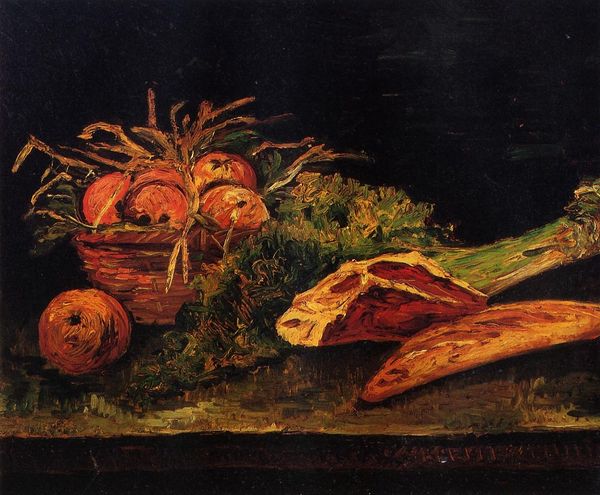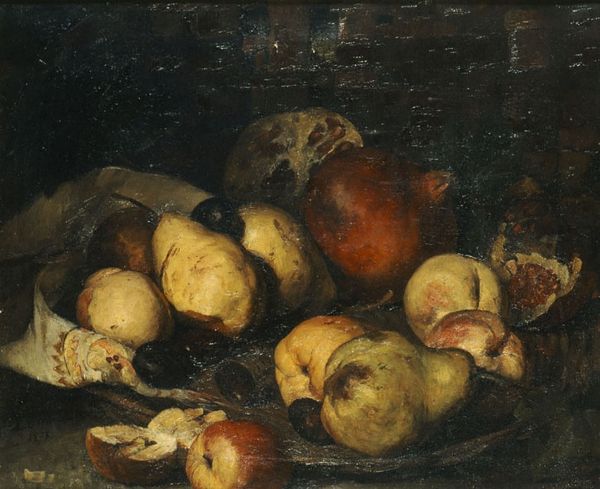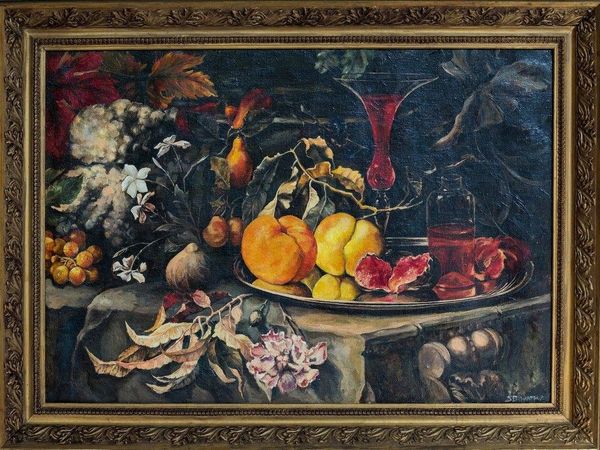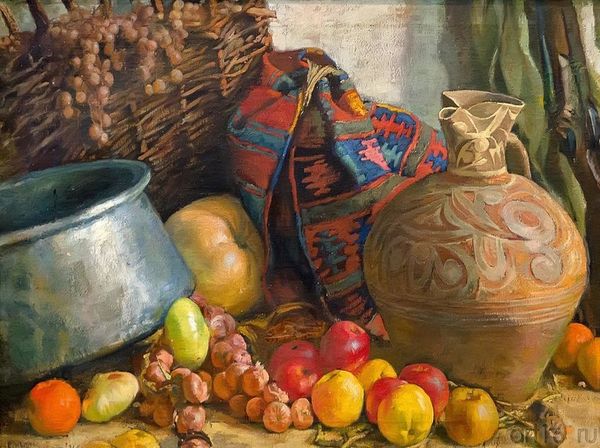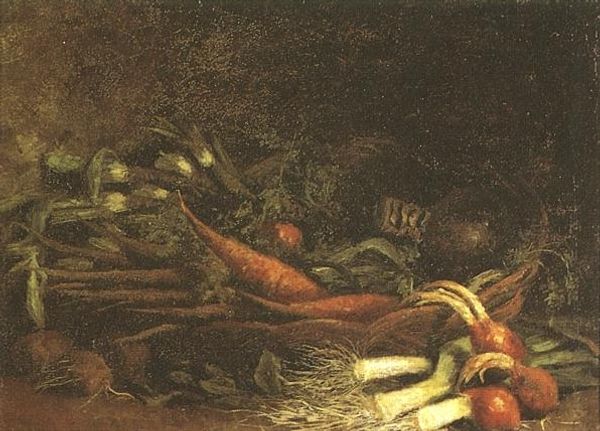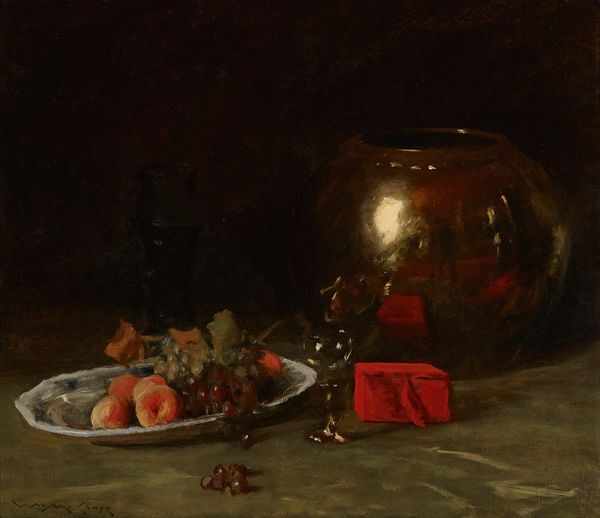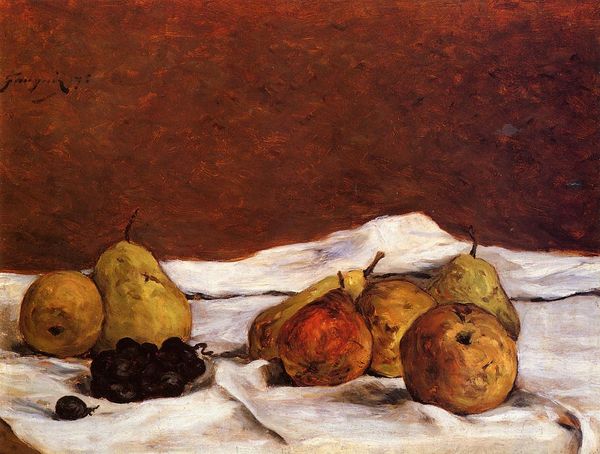
painting, oil-paint, impasto
#
still-life
#
painting
#
oil-paint
#
german-expressionism
#
oil painting
#
impasto
#
vanitas
#
expressionism
#
expressionist
Copyright: Public domain
Editor: Here we have Lovis Corinth’s "Still Life with Flowers, Skull, and Oak Leaves," painted in 1915. There's a striking contrast between the vibrant colors of the fruit and flowers and the stark skull. What symbols do you notice in this still life? Curator: Well, immediately, the skull stands out. It's a powerful, timeless symbol, right? The skull whispers of mortality. Corinth is working within the ‘vanitas’ tradition. The wilting flowers, the ripening fruit, are these not also emblems of the transience of beauty and life? Editor: So, it’s a reminder of death through symbols of life? The ephemerality? Curator: Precisely. Consider the oak leaves, traditionally associated with strength and endurance. But are they vital and green? Or fading? Editor: Fading, definitely fading! Now, does the choice of using these strong, expressionistic brushstrokes contribute to that sense of decay or passing of time in any meaningful way? Curator: Absolutely. The impasto, thick application of paint, adds texture and immediacy, and heightens the emotional impact. It's not about precise representation, but about conveying feeling. A palpable sense of fleeting life is built in the application of paint itself! Editor: That makes a lot of sense, to build meaning with application. Thanks, seeing the traditional symbolism along with Corinth’s mark-making has deepened my appreciation for how ‘vanitas’ can come to life with paint. Curator: My pleasure. It is rewarding to think through how symbols endure over time.
Comments
No comments
Be the first to comment and join the conversation on the ultimate creative platform.
